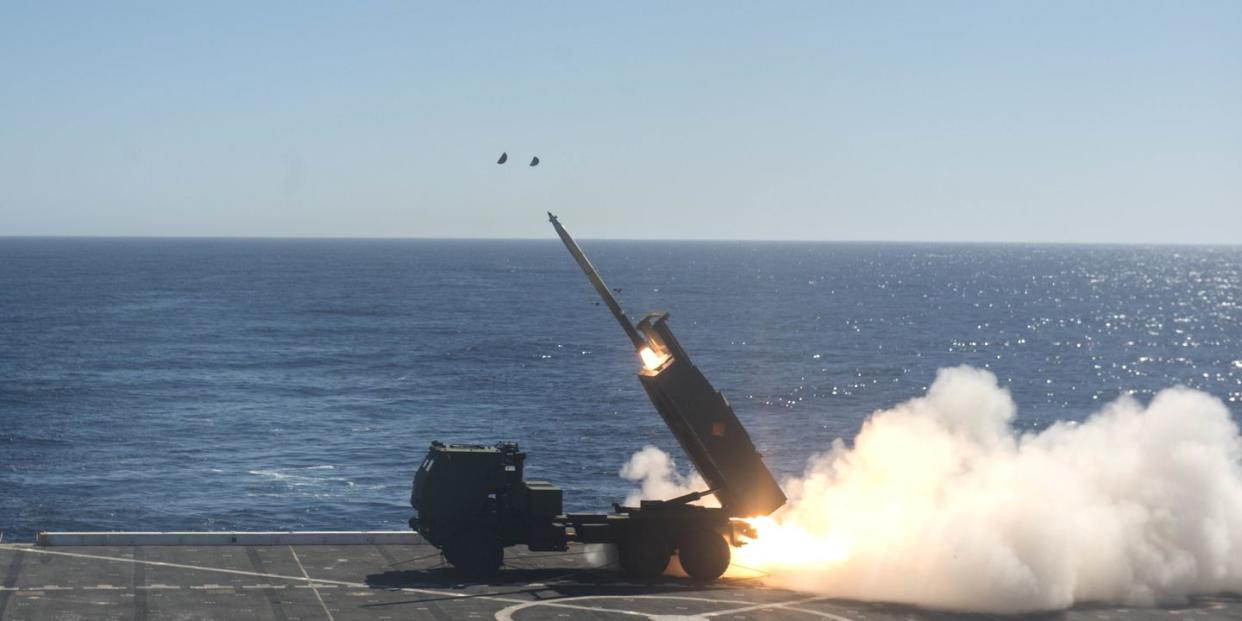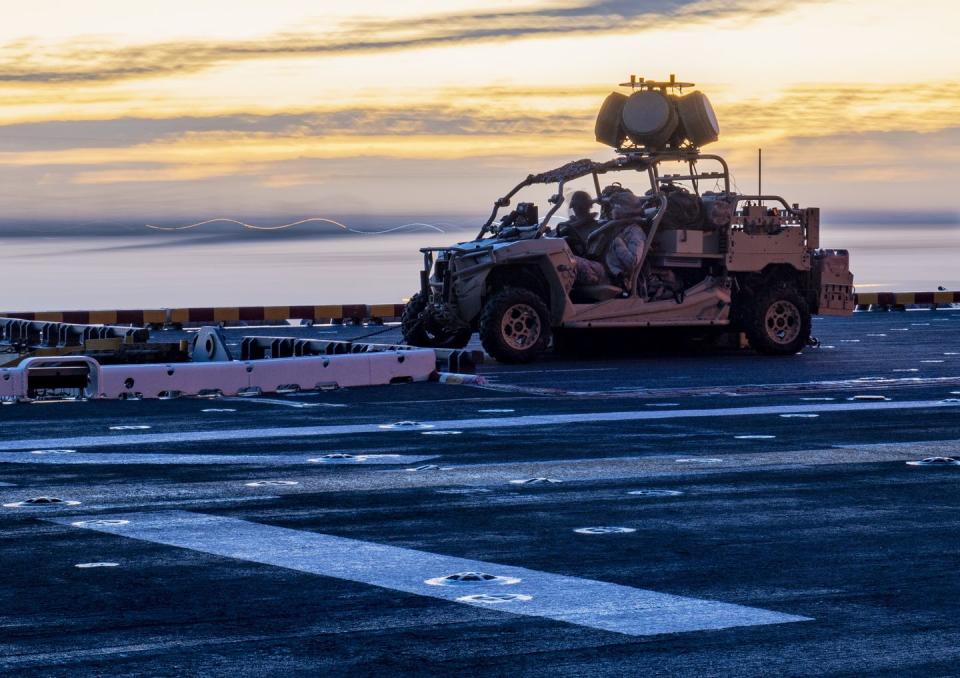The Marines Are Changing the Way They Do Business

The Marine Corps is reorganizing itself as it reorients from the guerrilla wars of the 2000s to face off against Russia and China.
Marine vehicles will add to the firepower of the surface fleet, both in offense and defense.
The Marines will also change how they use drones, moving from replacing people to boosting the firepower and reach of the overall force.
The U.S. Marine Corps of 2030 will be much different from the Corps of 2010. After nearly two decades engaging insurgents in Afghanistan and Iraq, America’s seagoing ground force is remaking itself to pose a greater and more effective threat against major powers like Russia and China. The service, according to the new Commandant of the Marine Corps, will need to become smaller, work more closely with the Navy ships it rides on, and operate a wide spectrum of unmanned vehicles.
Marine Commandant Gen. David Hilberry Berger, speaking at the Heritage Foundation as reported by DefenseOne, says the service needs to change to the times, away from the infantry-heavy ground force that patrolled Iraq and Afghanistan. The Marines will operate in smaller units reminiscent of how U.S. special operations forces operate, spread across the battlefield and connected by secure communications and datalinks.
Another change: According to Berger’s planning guidance for 2019, Marine Corps ground units will no longer be “passive passengers” when onboard Navy landing ships. Russian and Chinese forces will often operate near or at the same level technologically as the Navy and Marines, a major change from lightly armed insurgent adversaries encountered during the post-9/11 period. These forces will be well-trained, sophisticated, and could even outnumber U.S. forces, at least initially, and the Navy and Marines will need to work more closely than ever to counter the threat.

The Marines have recently experimented with strapping vehicles to the deck of amphibious transports and utilizing their firepower to strike targets on land or even defend the ship. In 2017’s Dawn Blitz exercises, a HIMARS truck-mounted rocket launcher fired a rocket from the deck of the amphibious transport dock USS Anchorage (as shown above). This past June, a Marine Corps anti-drone weapon mounted on an all-terrain vehicle downed an Iranian drone after the unmanned aircraft got too close to the USS Boxer.
The service will also increase the amount of drones it uses, as well as change how they're used. Instead of using drones to simply accomplish dangerous tasks, the Marines will now use them to expand the size and lethality of the force.
The Marines’ MUX drone, or Marine Air Ground Task Force Unmanned Aircraft System-Expeditionary, will be designed to both ferry supplies and act as an unmanned gunship fast enough to escort MV-22 Osprey tiltrotor transport aircraft. The Marines are also introducing drones all the way down to the squad level, with each 13-person Marine rifle squad assigned its own quadcopter drone and drone operator.
You Might Also Like

